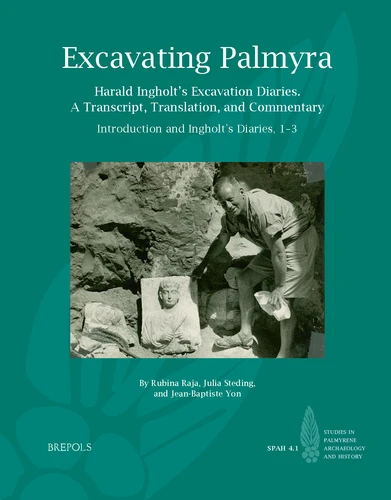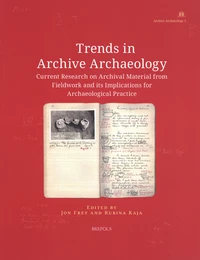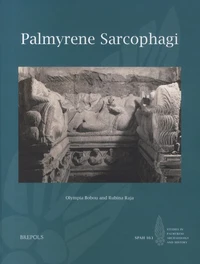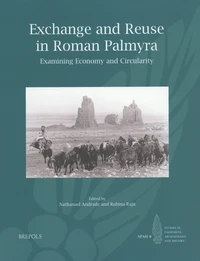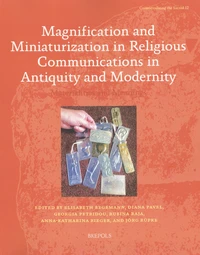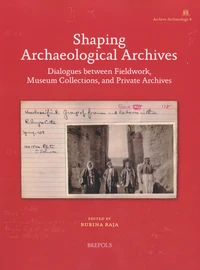Excavating Palmyra. Harald Ingholt’s Excavation Diaries: A Transcript, Translation, and Commentary
Par : , , ,Formats :
- Paiement en ligne :
- Livraison à domicile ou en point Mondial Relay estimée à partir du 1 décembreCet article sera commandé chez un fournisseur et vous sera envoyé 5 jours après la date de votre commande.
- Retrait Click and Collect en magasin gratuit
- Livraison à domicile ou en point Mondial Relay estimée à partir du 1 décembre
- Nombre de pages1846
- PrésentationRelié
- Poids8.06 kg
- Dimensions21,6 cm × 28,0 cm × 0,0 cm
- ISBN978-2-503-59531-3
- EAN9782503595313
- Date de parution21/09/2021
- CollectionStudies in Palmyrene Archaeolo
- ÉditeurBrepols
Résumé
When the Danish archaeologist Harald Ingholt conducted his ground-breaking excavations of Palmyra in the 1920s and 1930s, during which time he investigated several grave monuments and carried out the first observations of Palmyra's famous funerary portraits, he kept detailed diaries of his work. For a long time, these have been stored at the Ny Carlsberg Glyptotek in Copenhagen together with the extensive Ingholt Archive, while further photographs and notes on Palmyrene sculpture have been kept with Ingholt's family in the United States.
Now this material and Ingholt's diaries, written primarily in Danish, have for the first time been transcribed and translated into English with a full commentary written by Professor Rubina Raja, Dr Julia Steding, and Dr Jean-Baptiste Yon, in order to make these unique texts available to a wider public. The diaries contain a wealth of information on Palmyrene sculpture, grave complexes, and inscriptions from the city, as well as offering previously unpublished details into Ingholt's excavations, and his time in the field that will provide essential new insights for scholars working on Palmyra.
Now this material and Ingholt's diaries, written primarily in Danish, have for the first time been transcribed and translated into English with a full commentary written by Professor Rubina Raja, Dr Julia Steding, and Dr Jean-Baptiste Yon, in order to make these unique texts available to a wider public. The diaries contain a wealth of information on Palmyrene sculpture, grave complexes, and inscriptions from the city, as well as offering previously unpublished details into Ingholt's excavations, and his time in the field that will provide essential new insights for scholars working on Palmyra.
When the Danish archaeologist Harald Ingholt conducted his ground-breaking excavations of Palmyra in the 1920s and 1930s, during which time he investigated several grave monuments and carried out the first observations of Palmyra's famous funerary portraits, he kept detailed diaries of his work. For a long time, these have been stored at the Ny Carlsberg Glyptotek in Copenhagen together with the extensive Ingholt Archive, while further photographs and notes on Palmyrene sculpture have been kept with Ingholt's family in the United States.
Now this material and Ingholt's diaries, written primarily in Danish, have for the first time been transcribed and translated into English with a full commentary written by Professor Rubina Raja, Dr Julia Steding, and Dr Jean-Baptiste Yon, in order to make these unique texts available to a wider public. The diaries contain a wealth of information on Palmyrene sculpture, grave complexes, and inscriptions from the city, as well as offering previously unpublished details into Ingholt's excavations, and his time in the field that will provide essential new insights for scholars working on Palmyra.
Now this material and Ingholt's diaries, written primarily in Danish, have for the first time been transcribed and translated into English with a full commentary written by Professor Rubina Raja, Dr Julia Steding, and Dr Jean-Baptiste Yon, in order to make these unique texts available to a wider public. The diaries contain a wealth of information on Palmyrene sculpture, grave complexes, and inscriptions from the city, as well as offering previously unpublished details into Ingholt's excavations, and his time in the field that will provide essential new insights for scholars working on Palmyra.

